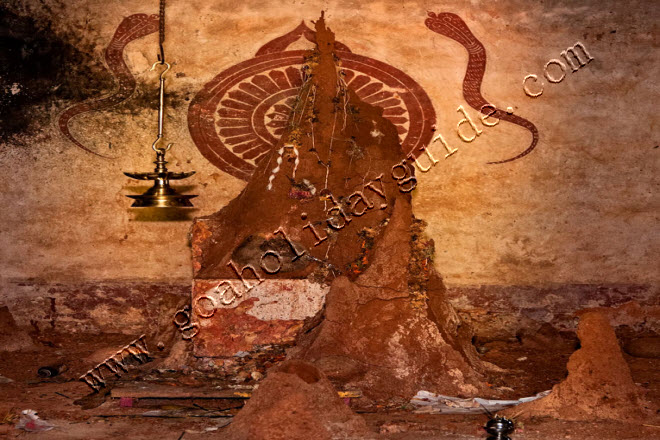Goa during the Neolithic Period
Anthill Worship
In Goa, the anthill is regarded as a manifestation of the Earth Goddess by many Hindus, and she is given names such as Sateri, Bhoomika, Ela, and so on. The Goan village – Bhoma, cognate of Bhoomi (Earth) – derives from the worship of an anthill.
The earliest settlers in Goa were the proto-australoids or austro asiatics in the frm of Konka, the Kol or Munda tribes, whose remnants still survive in the aborginal element of Goa as the Gauddi, the Kunbi, and the Vellip. Archaeological evidence in the form of polished stone axes that suggest the first settlements of Neolithic man in Goa have been found in Goa Velha. During the period tribes of Austric origin such as the Kols, Mundaris and Kharvis may have settled Goa, living on hunting, fishing and a primitive form of agriculture since 3500 BC. According to Goan historian Anant Ramakrishna Dhume, the Gauda and Kunbi and other such castes are modern descendants of ancient Mundari tribes.
Dhume notes several words of Mundari origin in the Konkani language. He describes the deities worshipped by the ancient tribes, their customs, methods of farming, and its overall effect on modern-day Goan culture. The Negroids were in a Neolithic stage of primitive culture and were food-gatherers. Traces of Negroid physical characteristics can be found in parts of Goa, up to at least the middle of the first millennium.
The Proto-Australoid tribe known as the Konkas, from which is derived the name of the region, Kongvan or Konkan, with the other mentioned tribes, reportedly made up the earliest settlers in the territory. Agriculture had not fully developed at this stage and was being developed. The Kol and Mundari may have been using stone and wood implements, as iron implements were used by the megalithic tribes as late as 1200 BC. The Kol tribe is believed to have migrated from Gujarat.
Anthill Worship In Goa
During this period, the people began worship of a mother goddess in the form of anthill or Santer. The Anthill is called Roen, which is derived from the Austric word Rono, meaning with holes. The later Indo-Aryan and Dravidian settlers also adopted anthill worship, which was translated into Prakrit Santara. They also worshipped the mother earth by the name of Bhumika in Prakrit. Anthill worship still continues in Goa today.
Strictly speaking, these should not be known as anthills because they are made not by ants but by termites (misleadingly called while ants). The termite, in fact, is unrelated to the ant. It is entomologically closer to the cockroach, but mainly confined to tropical and subtropical regions of the planet. The most impressive of these anthills in active worship in Goa is found in the village of Virnoda, and the Sateri temple at Morjim.
